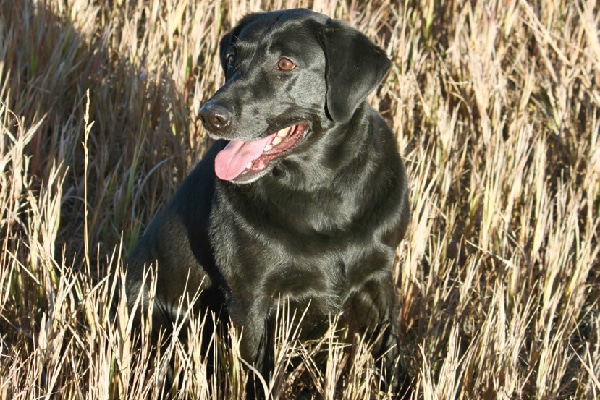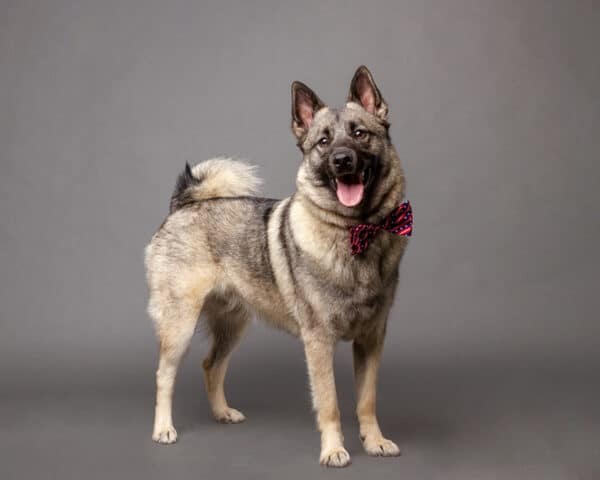The Labrador Retriever is the most popular breed in the United States, as well as in Finland, India, the United Kingdom and many other countries. A vigorous playmate, the Lab loves his family wholeheartedly and rarely picks a bone with anyone.
The breed’s intelligence and good nature facilitate easy training. Labrador Retrievers excel in hunting, service work, explosive detection and companionship. Is there anything the breed can’t do? Well, his sociable nature doesn’t match up with guard dog duty!
Where and how did Labrador Retrievers originate?

Although celebrated for friendship with humans, Labs were developed to work. Predecessors of the breed assisted Newfoundland fishermen off the Labrador Sea shores. They worked diligently alongside their owners in freezing temperatures and icy waters. The dogs helped bring in nets and gather fish escaping from the lines.
Well-known for athleticism and energy, early Labs wanted to play, even after long work days. In the 1800s, Labrador Retrievers were imported to England and further developed as gun dogs. The dog’s task was to retrieve dead and wounded game, delivering it to the hunter undamaged.
The Labrador as a working dog today
The Labrador’s soft mouth, swimming skills and water-resistant coat make him a popular breed with today’s hunters. Labs (especially those bred from field lines) will work all day, flushing upland birds or retrieving downed waterfowl. But new jobs have arisen for the adaptable Labrador.
The breed stands out in search and rescue, and narcotic detection, as well as water and avalanche rescue. Our armed forces deploy Labradors extensively as explosive detection dogs.
Labs guide the vision-impaired, provide aid to autistic children, offer brace and mobility support, work as hearing dogs for the deaf and serve as diabetic alert dogs, to name a few of their service jobs. Of course Labs excel in sports, too, taking the podium in obedience, rally, tracking, dock diving and field trials.
What to know about living with and training a Labrador Retriever

Training a Labrador is relatively easy; he’s smart and biddable. But, especially as puppies, the enthusiastic Lab may be rather boisterous. Slow to mature, the Lab’s puppyhood isn’t short-lived; families must focus on channeling his energy.
Fortunately, the Lab appreciates activities of all kinds. Since he’s such a speedy learner and happy-go-lucky companion, the Lab suits almost any dog lover, including novice owners. He absorbs commands quickly, forgives readily and rarely bosses other animals. In fact, he’s usually the dog park favorite.
Labrador Retriever Stats
- Life span: 10 to 12 years weight: 65 to 80 lbs (male); 55 to 70 lbs (female)
- Colors: Black, yellow and chocolate
- Coat: Short, dense, weather resistant and double coated
- Shedding: Don’t let the short coat deceive you — Labs shed
- Tail: The otter tail is a distinguishing feature of the breed. The rudder-like tail helps with swimming and balance. The powerful tail can also knock a lamp off a table in one wag!
- Possible health issues: Joint problems such as hip or elbow dysplasia; a tendency to obesity if not managed
- Equipment: Tough, strong toys to stand up to the Lab’s serious play drive
- Best for: Labs are a nice choice for first-time dog owners, as they are adaptable and trainable. They also usually don’t hold grudges about novice owner slipups.
- Breed Motto: A bad place to be is between me and the ball!
Meet Caeli, the Labrador Retriever

Caeli, a 5-year-old Labrador Retriever owned by Chuck and Emily Jones in Colorado, is a sweetheart at home and pure energy in the field. Bred in Yuma, Colorado, Caeli is the descendant of especially athletic hunting lines. If potential Lab owners want a robust, dynamic dog for hunting or sports as well as companionship, they’ll want to research breeders who develop lines for field work.
Read more about dog breeds on Dogster.com:
- Does Your Dog Make the List of the Dumbest Dog Breeds?
- The 5 Best Guard Dog Breeds
- All About the Rhodesian Ridgeback
Why read breed profiles?
Dog breed profiles help everyone, whether you have a mixed breed or purebred dog, to better understand and improve the quality of your dog’s life. If you have a mixed breed dog, read up on all of the breed profiles that make up your dog. Not sure what breed your dog is? There are a number of easy DNA tests out there to help your find out.
Editor’s note: This article first appeared in Dogster magazine. Have you seen the new Dogster print magazine in stores? Or in the waiting room of your vet’s office? Subscribe now to get Dogster magazine delivered straight to you!
Featured Image Credit: ©4FR | Getty Images.






